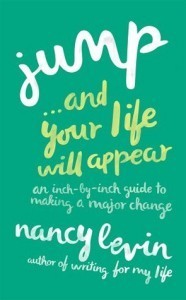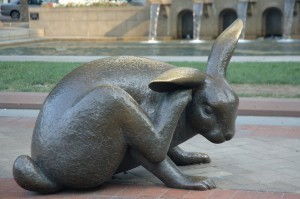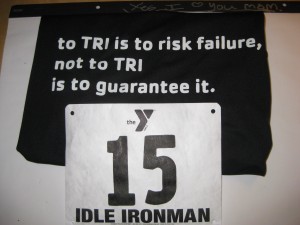Rochelle Melander's Blog, page 13
April 1, 2014
Don’t be a Fool! Avoid these Social Media Blunders by Rochelle Melander
 Fools talk, cowards are silent, wise men listen. —Carlos Ruiz Zaffón
Fools talk, cowards are silent, wise men listen. —Carlos Ruiz Zaffón
Nearly every day, I see writers commit one of these foolish mistakes on multiple social media sites. But you don’t have to be one of them. Follow my advice and become a writer with social media savvy!
Foolish Mistake #1: Make it all about you. I see many writers using their social media feeds solely to promote their work. Every single post shouts their successes: publishing deals, book awards, blog posts, and more. Some will say, “Well, that’s okay on Twitter and LinkedIn, just not on Facebook.” I disagree. If LinkedIn is like a giant networking event, Twitter is like a huge block party, and Facebook is a reunion with people from all parts of your life, how do you want to show up? Do you want to be the person who shouts about how great they are and shoves examples of their work at others? Probably not.
Wise Tips
+Look at your social media pages. How many of your last 20 posts were about you or your work? If your content ratio (posts about you to posts about others) favors you, work on shifting it. There’s no hard rule for the perfect ratio, but as a reader, I prefer at least 5 to 1: five posts about others for every self-promotional post.
+ Think about your online persona as an extension of you. Look at your last 20 posts and ask, “How do I present myself? What do these posts say about me?” If you don’t like what you see, change it. Let your posts reflect the best of you.
Foolish Mistake #2: Ignore other writers. I’ve noticed that some writers act a bit like big corporations. They’re happy to post about themselves, but they rarely interact with others. They don’t acknowledge the success of their peers, repost the work of other writers, or interact. Sometimes writers take this approach simply because they’re busy: relating to others takes time. I hear you. But remember: social media is mostly about connecting. Writers who succeed interact well with others.
Wise Tips
Review your social media activity over the last few weeks. Get a sense of the numbers:
+What platforms are you interacting on?
+How many people do you interact with?
+In what ways are you interacting?
+Are others interacting with you?
If your review turns up a less-than-positive view of your interactions, don’t despair. Try this:
+On Facebook, wish everyone a happy birthday. Use the LIKE button, offer supportive comments, and reshare (with credit) helpful tips.
+On LinkedIn, congratulate people for their successes and promotions. Comment on their content-oriented posts.
+On Twitter, retweet! Ask questions. Invite dialogue.
Foolish Mistake #3: Connect solely to promote. It used to surprise me: I’d get a connection request from a stranger and within 24 hours of accepting, I’d receive an offer to buy their book, use their brand new book marketing or publishing service, or promote their work on my blog. Now I’m used to it—and sick of it. I’m cynical—when someone connects with me on social media, my first thought is: what do they want? In these days of extreme platform anxiety, we might feel pressure to connect quickly with LOTS of people. Instead, take a deep breath and slow down.
Wise Tip
A single real connection is better than hundreds of “kind of” connections. Instead of trying to build a huge list of connections, join a few groups (online and offline) where you can build relationships with others. Help connections promote their work. Then when you do have something to promote, they’ll be happy to help you, too.
A final word. I’m trying to remember that we’re all doing the best we can. We’re human. Social media changes daily. We’re going to make foolish mistakes. (Accept it, forgive, and move on!) As writers, the best social media strategies are individual and flexible. What works today may not work in a few weeks. It helps to review and revise your plan frequently!
Your turn: What’s your social media pet peeve?
March 28, 2014
#WritersRead: The Five Books that Most Shaped My Writing by Nancy Levin
I’m thrilled to welcome Nancy Levin to the blog. She’s here to talk about the books that have shaped her writing—and it’s a delicious list! We’re also celebrating with her the release of her wonderful new book: Jump…and Your Life Will Appear. After you read the post, enter to win a signed copy of the book! -Rochelle, The Write Now! Coach
 Writers Read: The 5 Books That Most Shaped My Writing by Nancy Levin
Writers Read: The 5 Books That Most Shaped My Writing by Nancy Levin
So, after nearly two years of pouring my soul into my new book, Jump…And Your Life Will Appear: An Inch-by-Inch Guide To Making A Major Change it is finally here – and landing in people’s hands and hearts.
When I received my very first copy the other day, I never expected to sit right down and read it. The whole thing. Cover to cover. In one sitting. Upon closing it, I burst into tears. It was crystal clear to me that everything I had experienced in my life led me to this very moment. I saw both the chaotic, messy backside of my tapestry with all the strings hanging off and I saw the intricate, elaborate front, showcasing my artful integration. And for the first time ever, I wouldn’t have changed a thing. It’s true what my dear friend and mentor Debbie Ford said, “Everything that has happened, is happening and will happen is in divine order for you soul’s evolution.”
As I was reading the final book, I also noticed things I wanted to edit. Not your average typo, but concepts and insights. And yet, I knew that if I read this book every day, I’d want to keep making changes to it. Because every day I am making changes to me.
So instead I had to make peace with this book being out in the world exactly as it is–just like I am–not easy for a recovering Type A-perfectionist. And then I started to think of it as a photograph—a snapshot of me at a specific time. And evolving, still.
This is precisely why I love memoir and poetry. The ability to capture a specific period or moment in time. Stacked up beside me, these are the books–the companions and confidants–always near me when i write.
Broken Open by Elizabeth Lesser: Elizabeth’s unbridled honesty about the choices she made in times of challenge and transition captivated my heart. Her courage to rise again gave way to mine. Brave.
Devotion by Dani Shapiro: I love the way this book moves back and forth in time as an archeological dig through Dani’s past and how it informs her present. Magnificent.
Heaven’s Coast by Mark Doty: A masterful memoir by a poet, what could be more mesmerizing, as Mark holds us close witness the death of his lover from AIDS. An intimate and gorgeous book like no other.
The Year of Magical Thinking by Joan Didion: A spotlight on an accelerated period in the life of one of the most extraordinary writers of our time. Not to be missed. This book still haunts me. It became a one-woman show on Broadway with Vanessa Redgrave. Brilliant and breathtaking.
The Dark Side of the Light Chasers by Debbie Ford: Using herself as a model, Debbie shows us how our own dark underbelly can emerge transformed in the light and how our quest to return to wholeness begins with embracing the parts of us we have previously disowned. Raw and courageous.
*Bonus – What The Living Do by Marie Howe: Her searing poetry, specific and particular, bares all…love, grief, truth. Each piece, a gem.
Your turn: Ask Nancy Levin a question or share your favorite inspirational guide!
 About the author. Nancy Levin, author of Jump … And Your Life Will Appear and Writing For My Life, is a Certified Integrative Coach through The Ford Institute For Transformational Training. Since 2002, she’s been the Event Director at Hay House, Inc. producing experiential events and innovative conferences, focusing on self-empowerment, health and spirituality, while weaving in her own story and poems to connect with audiences around the world during keynotes, workshops and seminars. When she’s not on an airplane, Nancy lives in Boulder, Colorado where she received her MFA from Naropa University. You can visit her online at www.nancylevin.com. Visit her on Twitter and Facebook.
About the author. Nancy Levin, author of Jump … And Your Life Will Appear and Writing For My Life, is a Certified Integrative Coach through The Ford Institute For Transformational Training. Since 2002, she’s been the Event Director at Hay House, Inc. producing experiential events and innovative conferences, focusing on self-empowerment, health and spirituality, while weaving in her own story and poems to connect with audiences around the world during keynotes, workshops and seminars. When she’s not on an airplane, Nancy lives in Boulder, Colorado where she received her MFA from Naropa University. You can visit her online at www.nancylevin.com. Visit her on Twitter and Facebook.
March 25, 2014
Sick? Stop Writing and Rest by Rochelle Melander
Happy Spring! After months of teaching sneezing, coughing kids at the library, I finally got sick. Last Wednesday, I came down with a sore throat and chills. I cancelled all my meetings—I didn’t want to make others sick—but thought, “I can still work.”
And then I got worse. By Sunday, I was a sneezing, wheezing mess. Evidently, sometimes you can’t write through it!
So writers, I’m taking a few days off. I’m moving the Write Now! Mastermind class to next Wednesday, April 2, 2014 at 12:00 PM CDT. Hopefully by then I’ll have my voice back!
Today’s tip talks about how writers can make the most of a sick day (an earlier version of this tip was published in the summer of 2011).
Happy Writing! Rochelle, the Write Now! Coach
By Rochelle Melander
Being a real writer means being able to do the work on a bad day. —Norman Mailer
I’ve read and shared this quote from Norman Mailer multiple times. He gives good advice: real writers work even when they don’t sleep well, the kids get sick, and the basement floods.
But still, sometimes you’re just too sick to write. Instead of beating up on yourself—I should be making progress on the novel, Stephen King would be writing, I’m such a loser—give yourself a break! Instead of writing, try this:
1. Sleep. Rest helps you to recover faster. At least that’s what my mom used to tell me. Plus the dreams you have when you are sick are wacky and fun. Jot down the best dreams and use them for inspiration next time you have writer’s block.
2. Have a Film Fest. I rarely get a chance to lie in bed and watch movies. This week, I plan to work my way through my Netflix queue. Next time you have a free moment, make a list of everything you’d like to watch. Next time you are sick, tired, or just in need of some inspiration, you’ll be prepared! Sit back and enjoy.
3. Read. I’ve always got a stash of books to read, and that’s what I’m planning to do this week. Keep a stack of books you want to read “someday.” Next time you get sick or snowed in, you’ll be prepared!
4. Take notes. Being sick gives you way too much time to think…and worry! Instead of tormenting yourself, take your journal to bed and jot down your ideas.
5. Surf the net. I spend so much time on the computer for work, I rarely have time to seek out great blogs, resources, and other tools for myself and my clients. What do you long to know more about? Make a list of all the information you’d research online if only you had the time. Next time you have the time, you’ll know what to search for!
Your turn: Share your best ideas for making the most out of being sick.
March 18, 2014
Stuck? Three Ways to Discover New Ideas By Rochelle Melander
 Ideas are like rabbits. You get a couple and learn how to handle them, and pretty soon you have a dozen. —John Steinbeck
Ideas are like rabbits. You get a couple and learn how to handle them, and pretty soon you have a dozen. —John Steinbeck
Last Tuesday at the library, we wrote noisy poetry. An eight-year-old girl whined, “But I don’t know what to write about!” I asked her questions: What interests you? What annoys you? What are some noisy things in your life? She shrugged. She doodled. Finally, after much discussion, she said, “Well, my cat has a stinky butt!”
“Does your cat make noise?” (Yes, I know—a risky question, given that she’d just mentioned her cat’s stinky butt.) Thankfully, my young friend suddenly remembered how her cat liked to leap onto things that made noise. And off she went, writing a poem about her noisy cat.
So writers, what do you do when you’re out of ideas and don’t have a writing group to help you? Here are three idea-generating tools:
1. Title Generator. I happened upon the Tweak Your Biz title generator when I was researching blog titles and fell in love. Type in your topic, let the tool know if it’s a noun or a verb, and abracadabra: the tool delivers oodles of titles. It’s not perfect, but it will spark some ideas.
2. Lists. I often make lists or mind maps of writing ideas. But when I’m out of ideas, it’s helpful to read other people’s lists of ideas. Here are a few to get you started:
+Bernadette Mayer’s List of journal ideas and prompts.
+List prompts for your art journal. Use these prompts to create your own lists of ideas.
3. Idea Networks. An idea network collects the best business ideas from around the world in a single place. While these ideas are geared toward entrepreneurs who want to start businesses, journalists and writers can use these ideas in blogs, articles, and novels.
+Springwise: http://www.springwise.com
+Trendwatching: http://trendwatching.com
The next step: Once you have a list of ideas that excite you, spend time journaling. Create a mind map or list (!) around one or more of the ideas to see if it’s juicy enough to develop into a blog post, an article, or even a book!
Your turn: What sites do you use to gather ideas?
#Writers, share your favorite idea-gathering sites!
Click To Tweet - Powered By CoSchedule
March 11, 2014
When Habit Isn’t Enough: How to Boost Productivity By Rochelle Melander

2013 T-Shirt and bib
As you may have read last week, I’ve signed up for the Idle Ironman at my Y. In the next month, I’ll bike 112 miles, run 26.2 miles, and—since I don’t swim—run an extra seven miles.
The first year I did the Idle Ironman, I started a week late. But I figured it’d be easy: I already had a habit of getting to the gym every day. Ha! On March 31, I pedaled like a crazy woman to finish my miles. (I did finish, but it was painful!)
This year, I’m doing everything I can to finish early (or at least on time). Last week, as I added up my miles, I had a big aha moment (or maybe it was a duh! moment): I can’t rely on my exercise habit to get me across the finish line. If I just do what I normally do, I won’t finish the Idle Ironman. I won’t even come close. I have to put in more: more minutes, more miles and more effort.
When it comes to doing anything big—writing a book, running a marathon, or starting a business, your good habits will only take you so far. When I’m working on a book, I know that I can’t rely on my daily writing routine and expect to finish. I need to put in more time.
But how?
Recently, I came across this wonderful quote in Anne Truitt’s Daybook, the first of her three memoirs about her life as an artist.
“Before I went to sleep, I loosely organized the following day’s schedule—loosely because there were, of course, always unexpected events. … The periods left over from my practical responsibilities were spent in the studio. If there were fifteen minutes between shopping and carpool, I used them. If I had an hour, or two hours, I rejoiced, but didn’t even waste time feeling happy, just worked.” Anne Truitt, p. 126, Daybook
The takeaway? In addition to forming a writing habit—a set time you work on your craft each day—you can increase productivity in two ways:
1. Plan ahead. Every night, look over the next day’s schedule. After slotting in your regular writing time and other work and life tasks, assign one or more of your leftover periods to writing.
2. Create a plan for the in-betweens. When I read this passage, I was struck by Truitt’s statement: If there were fifteen minutes between shopping and carpool, I used them. Why not? Make a list of little bits you need to do for your book—small pieces of revision, research, reading, querying, or writing—and use the in-between times to tackle them.
Your turn: How do you increase your writing time when you’ve got a big project?
March 4, 2014
Beat the Writing Blues: Make a Small Change By Rochelle Melander
 All great things have small beginnings. —Peter Senge
All great things have small beginnings. —Peter Senge
In yoga, I notice that the small shifts yield big rewards. Tiny movements create aha moments. When I relax my shoulders, shift the angle of my foot, or lift my chin—the correct pose emerges. It feels right.
I’ve noticed the same phenomena in writing. Often, a client comes to me with what seems to be a big problem:
+When I finally get to the computer, I have nothing to say.
+My book structure doesn’t work.
+I can’t find time to write.
As we talk, the client comes up with one or two small shifts to try out. And guess what? These small shifts yield big rewards. These shifts have the power to demolish writer’s block, clear up book outlines, and create space to write.
The mistake most of us make, I think, is to believe that writing success comes when we make a giant effort, working ourselves to death every single day.
And effort matters. But for most of us who work as professional writers, this job is more like a marathon than a sprint. Yes, we must make an effort to reach success. But we must exercise that effort slowly, steadily, and over time.
When something is not working in our writing life, we can often make the most impact by tweaking our routine or our writing craft.
So this week, when you notice what does not work, make a tiny shift. Write in a different place, at a different time of day. Change point of view. Start in the middle of the story. Then see what happens!
What small changes yield big rewards in your #writing?
Click To Tweet - Powered By CoSchedule
February 25, 2014
How to Write Through Doubt by Rochelle Melander
 Remember these things. Work with all your intelligence and love. Work freely and rollickingly as though they were talking to a friend who loves you. Mentally (at least three or four times a day) thumb your nose at all know-it-alls, jeerers. critics, doubters. —Brenda Ueland
Remember these things. Work with all your intelligence and love. Work freely and rollickingly as though they were talking to a friend who loves you. Mentally (at least three or four times a day) thumb your nose at all know-it-alls, jeerers. critics, doubters. —Brenda Ueland
Doubt happens. Rejections pile up. Someone offers a not-so-kind remark about our work. Our inner editor gets mouthy.
We face the page but worry if anyone will ever read our work. Instead of writing, we argue with our demons—those negative voices inside our heads that whisper: you’re not good enough to succeed, no one cares about this story, do something useful with your life, who do you think you are, you’re just saying the same things over and over again.
We won’t last very long as writers if we’re fragile beings who can’t take rejection, criticism, and difficult people. We need to shake off that doubt and write even when we don’t feel like it. Here’s how to write through doubt:
1. Expect it. Doubt happens. Shirley Hazzard said, “The state you need to write in is the state that others are paying large sums to get rid of.” Most writers deal with self-doubt from time to time. Fighting against it takes work. Instead, expect it and accept it. When your inner doubter pipes up with a critique, acknowledge it, dismiss it, and keep writing.
2. Disagree with it. John Steinbeck wrote, “The writer must believe that what he is doing is the most important thing in the world. And he must hold to this illusion even when he knows it is not true.” Sometimes, being a writer means believing your own crap—and when it comes to writing through doubt, this is absolutely essential. Forget the friends and colleagues who dis you and your work. Instead, dig up all those nice notes your readers and editors have written to you over the years and put them in a box. Read them, remember you rock, and write.
3. Nurture yourself. Criticism, rejection, and inner doubt can damage our resolve to write. It can also deplete our inner reserves. In Daybook, Anne Truitt wrote about harsh critiques of her Arundel exhibit at the Baltimore Museum of Art. She said, “I am not concerned with reviewers’ judgments, yea or nay; they cannot deflect my course. What they can do, and this seems beyond my resistance, is hurt my general self, the supporting troops, so to speak, of my striking force.” (Daybook, p. 140) Make a list of ten soul-strengthening actions and do them regularly. When you’re feeling especially low, give yourself a day of nurture!
Your turn: What do you do when self-doubt strikes? What soul-nurturing actions do you use to support your art?
#Writers -- How do you conquer self-doubt?
Click To Tweet - Powered By CoSchedule
February 24, 2014
Writer Interview: Paul Geenan by Rochelle Melander
 I met Paul Geenan several years ago and was immediately intrigued by his intellect and curiosity. When I heard about his new book, Civil Rights Activism in Milwaukee, I wanted to learn more about the book and Geenan’s writing process. Geenan was kind enough to offer an interview, and you can read it below.
I met Paul Geenan several years ago and was immediately intrigued by his intellect and curiosity. When I heard about his new book, Civil Rights Activism in Milwaukee, I wanted to learn more about the book and Geenan’s writing process. Geenan was kind enough to offer an interview, and you can read it below.
If you’d like to learn more, Paul Geenan will appear at Boswell Book Company this coming Thursday, February, 27 at 7:00 PM. For more information, visit Boswell Book Company’s website.
What’s this new book about? This book describes the struggle for civil rights in the 60’s and the 70’s on the South Side of Milwaukee. Blue-collar workers living in small bungalows, duplexes and rear-lot cottages supported the numerous churches and visited the “ma and pa” taverns on almost every corner. Freeway construction played a role in the resistance of the South Siders to African Americans moving into their neighborhood. Young, newly married couples lost access to inexpensive homes taken by freeway construction, resulting in being forced to live with their parents.
Nuns at Alverno College offered programs on race relations to its students, faculty, and the community, resulting in two Alverno students, Maria Varela and Margaret (Peggy) Rozga traveling to the South, putting their very lives at risk, to help African Americans gain their voting rights.
Jesús Salas, David Giffy and Bill Smith, with the support of Cesár Chávez, organized Wisconsin migrant workers into an independent union called Oberos Unidos, fighting for improved working and living conditions. Failed cucumber and potato strikes resulted in many of these workers moving to the South Side of Milwaukee.
Since Wisconsin was the highest consumer of brandy, the state was an important target for the United Farm Workers strike against grape producers in California. African Americans, students, church and community members demonstrated at grocery stores, encouraging shoppers to not buy grapes resulting in grape shipments to Wisconsin dropping by 61% in 1969.
Hispanics fought for the education of their children in Milwaukee Public Schools and at the city’s universities. After several months of daily protests, 24 hour vigils and hunger strikes, Hispanics took over the UWM’s Chancellor’s office, locking a university staff member in a rest room This resulted in Hispanics being given access to the University for the first time.
Jesús Salas, Vel Phillips and Father Groppi led “Welfare Mothers’ March on Madison” resulting in taking over the Assembly Chambers and one thousand National Guardsmen being called out.
The decision by Federal Judge John Reynolds to desegregate MPS schools set off a struggle to keep bilingual schools in Milwaukee. Sophisticated Hispanic parents were successful in strengthening the bilingual schools, working with the African American community, the special master appointed to oversee the desegregation effort, the school board, school administrators, the teachers’ union, the media and community groups.
New leadership in the South Side community is a direct result of the civil rights activism of the 1960s and’70s. Today’s leaders, such as Milwaukee’s first Hispanic Alderman Jose Pérez, and Christine Neumann-Ortiz, executive director of Vocés de la Frontera, have their roots in the civil rights activists that came before them.
How did you come to write this? A longtime civil rights activist worried that the people who lived on the South Side of Milwaukee in the 1960s and ‘70s were seen as isolated and prejudiced. This person was worried that people would only remember the 13,000 angry South Siders who screamed epithets and threw garbage at Father James Groppi and his 250 young men from the NAACP Youth Council at the south end of the Sixteenth Street Bridge in August of 1967.
Can you talk about your research process? I relied heavily on personal interviews for this book in addition to the existing published works on the subject. Often a person being interviewed makes suggestions on other people to interview and knows of additional sources. After a month or so of research I usually have enough to create an outline, which gives me a sense of how to budget my time. I continue interviewing and doing research right up to the point where I submit my book for publication.
Can you offer advice to writers who want to write a nonfiction history book If it is possible, using personal interviews gives an added perspective to the story you are telling. Using as many names of people as possible adds to the credibility and interest of a book. Using photos from private sources are best, as other sources, such as local and state historical societies, are expensive.
 Can you talk about your road to publication: I submitted an Authors Proposal to History Press in January of 2013 and got an email in June saying that they liked my book concept. So it took a while to get an answer. The effort I had put forth in marketing my first two books with History Press, Schusters and Gimbels: Milwaukee’s Beloved Department Stores, and Sherman Park: A Legacy of Diversity in Milwaukee, helped in getting this proposal accepted.
Can you talk about your road to publication: I submitted an Authors Proposal to History Press in January of 2013 and got an email in June saying that they liked my book concept. So it took a while to get an answer. The effort I had put forth in marketing my first two books with History Press, Schusters and Gimbels: Milwaukee’s Beloved Department Stores, and Sherman Park: A Legacy of Diversity in Milwaukee, helped in getting this proposal accepted.
What’s your next project: I would like to write about some of the major players in the civil rights movement in Milwaukee in the ‘60s and ‘70s.
Your turn: Writers, what questions do you have for author Paul Geenan?
February 18, 2014
Stuck? Write Out of Order By Rochelle Melander
 Genius is finding the invisible link between things. —Vladimir Nabokov
Genius is finding the invisible link between things. —Vladimir Nabokov
Vladimir Nabokov, author of Lolita, wrote all of his novels on 3 x 5 index cards. Each day as he began his writing period, he would shuffle the cards until he found a scene that had energy for him and started writing from there. When the scenes were done, he rearranged the cards until he discovered the novel’s order.
How many writing projects are abandoned half way through because we are slaves to writing in order? Skip the boring or difficult parts and write the scene you have the most energy for right now.
February 11, 2014
Are You Writing at the Wrong Time of Day? By Rochelle Melander
Last week, Chuck Wendig wrote a great post on the quantity and quality of self-published books, Slushy Gut Slog: Why the Self-Publishing S$*t Volcano is a Problem. He said, “An author on Facebook the other day noted, quite correctly, that writing is a craft and as a craft it can be evaluated fairly easily.” Well said!
As a writer, reader, and coach—my job is to help you make sure your book is good enough to stand out from the slog, whether you want to self publish or submit your book to agents. That’s why I’ve invited editor Amanda Valentine to come to this month’s Write Now! Mastermind class to talk about how you can revise and edit your own work. Join us on Wednesday, February 19 at 12:00 PM CST. If you’re not yet a member of the Write Now! Mastermind class, you can sign up here.
Happy Writing! Rochelle, the Write Now! Coach

Me and My Shadow, at the Urban Ecology Center Sundial
Are You Writing at the Wrong Time of Day? By Rochelle Melander
The right thing at the wrong time is the wrong thing. —Joshua Harris
According to scientific research, our bodies peak for physical, social, and intellectual tasks at specific times of day. Researchers offer broad suggestions about when we do best at various activities. For example, many of us do well at intellectual tasks during the late morning while we excel at creativity in the evening when we are tired and more open to new ideas.
But even scientists admit that peak working times are different for each of us. Though some people can be classified as early birds or night owls, many people don’t fit easily into any category. As a writing coach, I encourage clients to examine their own life in order to discover when they write best. Here’s how:
+For the next two weeks, try working at different times of day. Keep a journal of your work. For each session, note the time, where you are writing, how the writing went, and any important external details. Additional details might include preparing beforehand, working in a quiet house, or trying to meet a deadline. Did you feel engaged? Creative? Did you experience flow or did you encounter blocks?
+Review your writing journal. When did the most productive writing sessions occur? When did your second best writing sessions happen? Did anything besides time of day contribute to your productivity?
Once you know when you write best, schedule your writing during those times of the day. Keep your second-best times as a back up for those gnarly days when your precious time gets taken up by drama or you need the extra hours to complete assignments.
What I learned from my writing journal: I’m a morning writer. I’ve always believed that if I squander those early morning hours, I’m done for the day. But after reading this article in 2012, I played with my schedule. I wrote at different times of day just to see if I could be productive at other times of day. I was surprised and delighted to discover that I enjoyed drafting work in the afternoon and evening. But I also found that I had a hard time polishing work at night—I was too tired. I encourage you to play with your writing schedule, too. You might find enough extra time to finish a new novel this year!
Your turn: When do you write best? Why?






